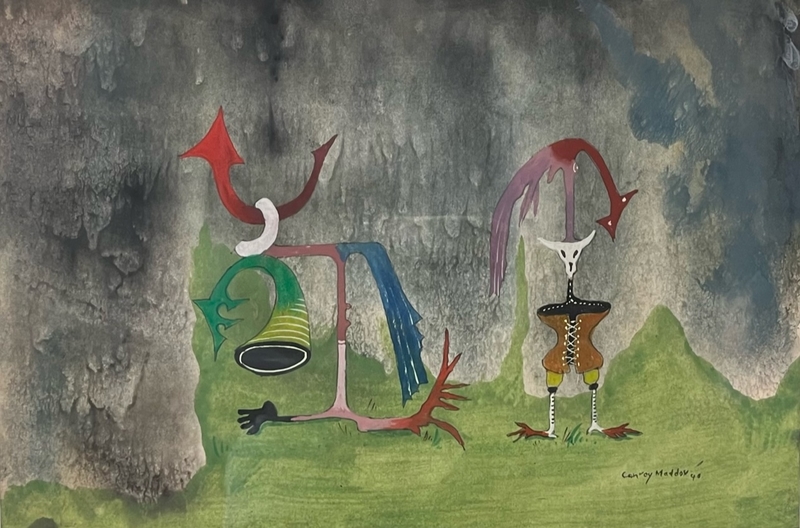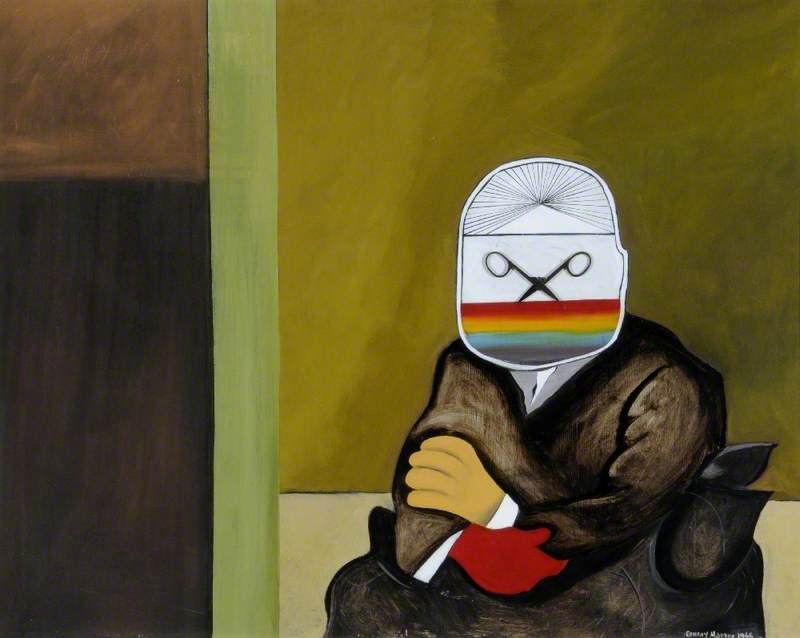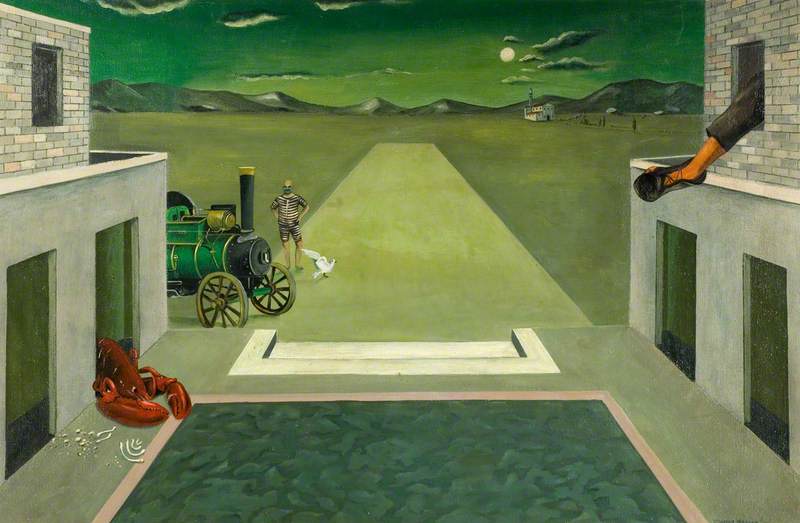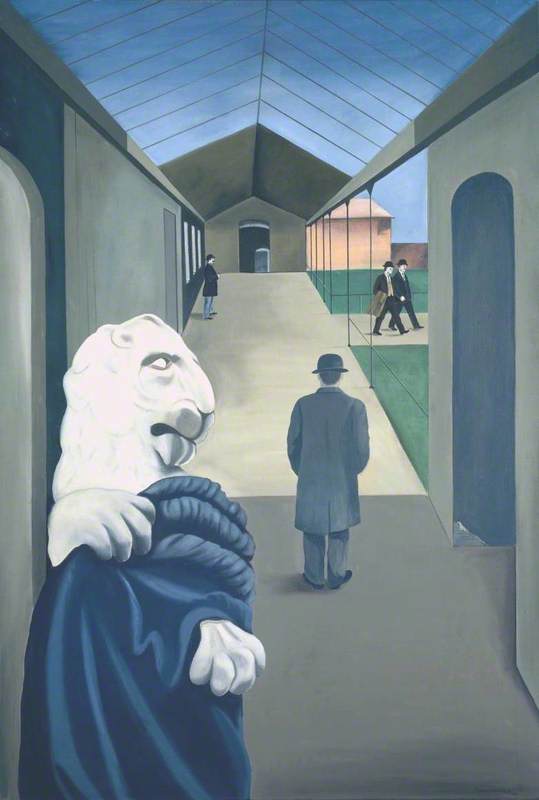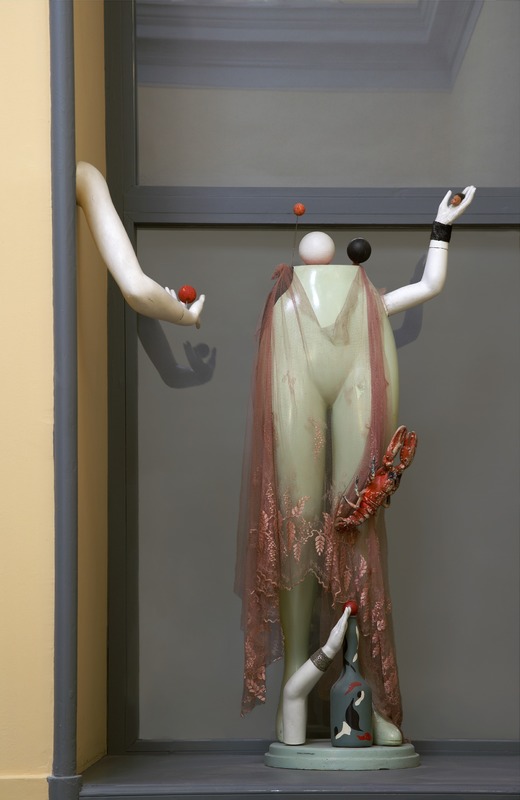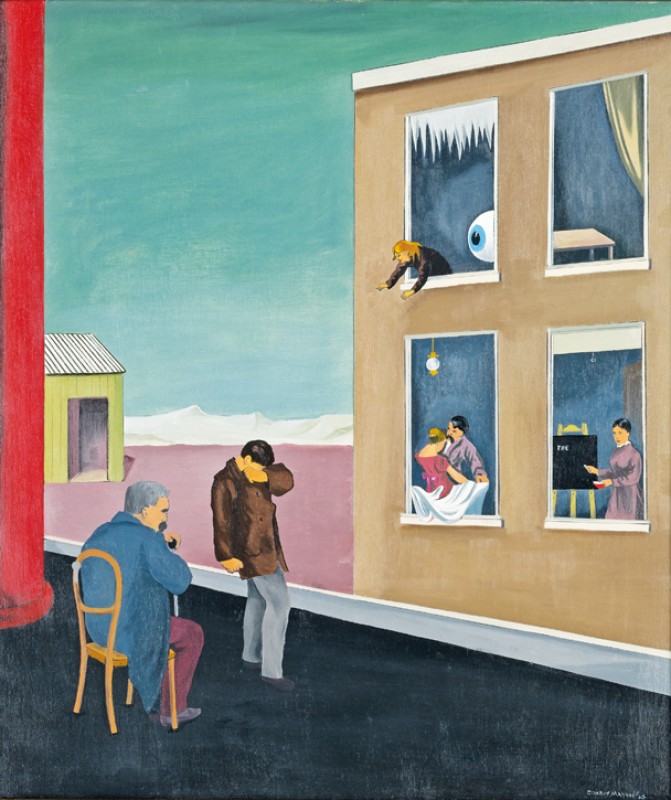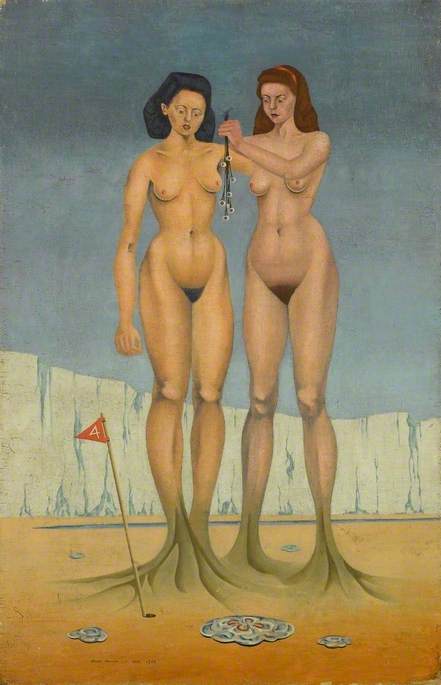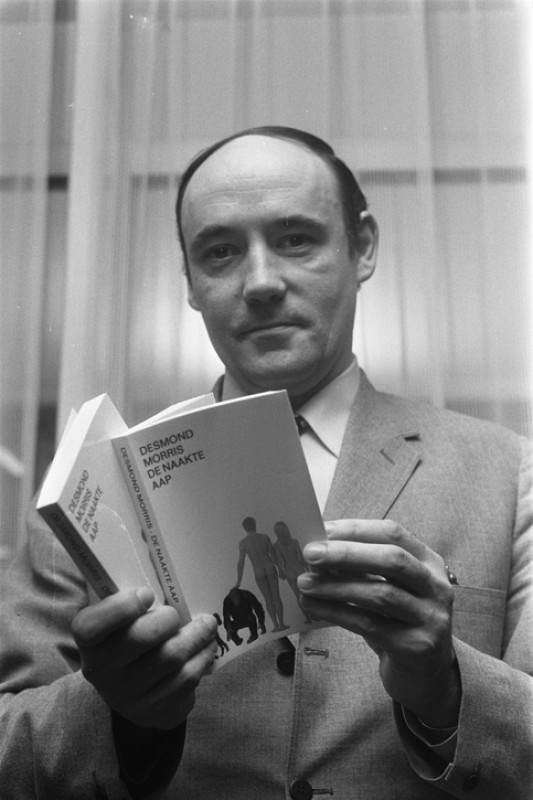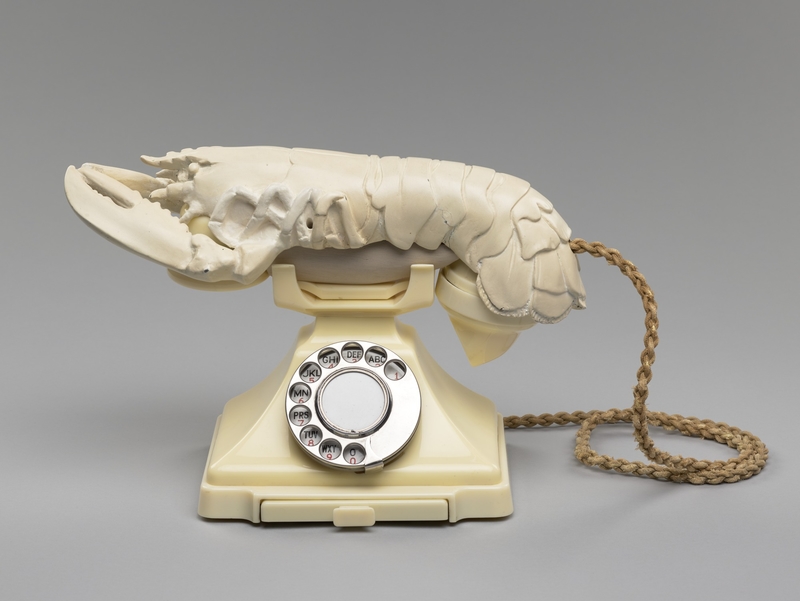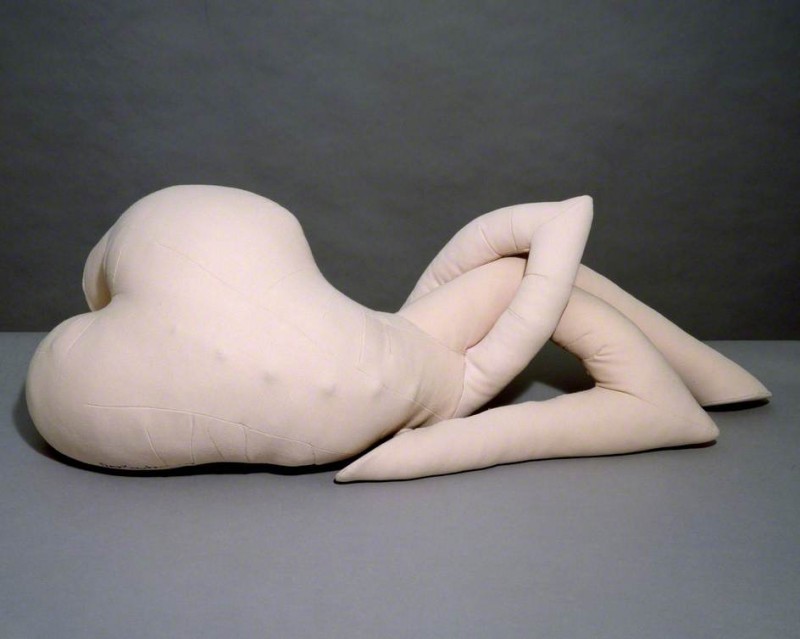British painter, born at Ledbury, Hertfordshire. He was the most committed, energetic, and enduring British exponent of *Surrealism, remaining true to its ideals throughout a very long career. He moved to Birmingham in the 1930s and in 1935, inspired by an encounter with a book by R. H. *Wilenski, became a convert to modern art. In 1937 he worked with the Paris Surrealists and the following year he joined the short-lived English Surrealist group; he thought that ‘the collapse of the English Surrealist movement can be attributed to its failure to establish a coherent political position’ (Charles Harrison, English Art and Modernism: 1900–1939, 1981). He had not taken part in the London International Surrealist Exhibition of 1936 because he considered it insufficiently Surrealist.
Read more
One of Maddox's paintings from this period, Passage de l'Opéra (1940, Tate), shows a clear debt to *Magritte in its enigmatic bowler-hatted figures, but he also worked in different veins and made collages and objects as well as paintings. Much of his work was inspired by his intense antagonism to religion (‘It is not that I am just against religion: I want to destroy it,’ he said in 1994) and he made something of a speciality of deriding nuns. His conception of Surrealism was always a highly political one: he wrote in 1996 that ‘it opposes those myths upon which capitalist culture depends, it breaks down all those Christian values which have been erected around a wooden cross’. He was among the artists who most unwaveringly kept the spirit of Surrealism alive. In 1978 he said, ‘No other movement has had more to say about the human condition, or has so determinedly put liberty, both poetic and political, above all else.’ In 1974 he published a book on *Dalí. Further Reading T. Hilton, obituary, The Guardian (19 January 2005)
Text source: A Dictionary of Modern and Contemporary Art (Oxford University Press)
